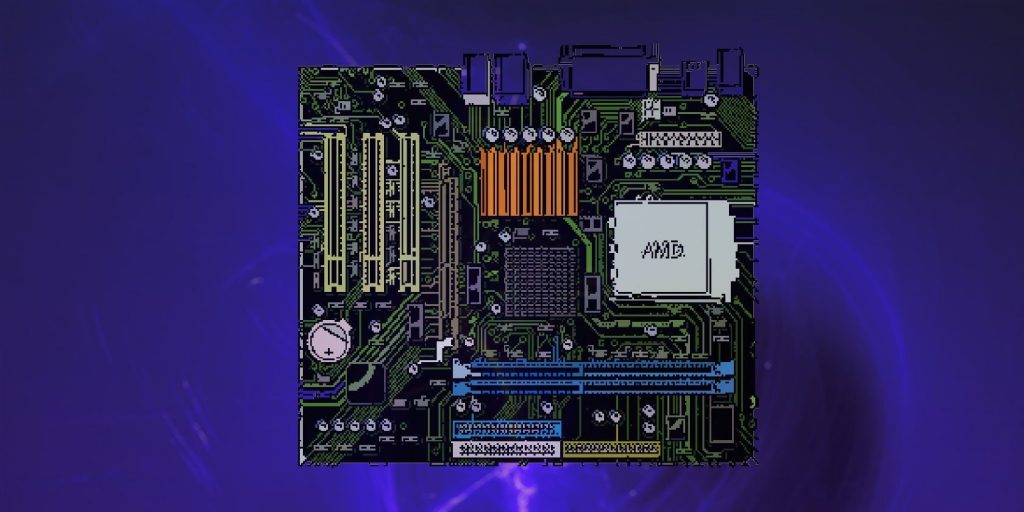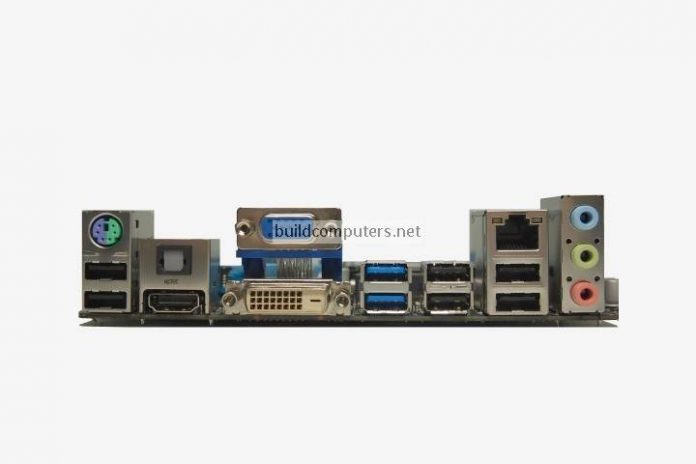When assembling a system with many components, it is helpful to indicate which parts go where on the motherboard. Although some motherboards come with their part labels glued on, these can be lost or damaged and need replacing. Correctly labeling your hardware helps you switch out old parts for new ones and ensures everything goes together as it should.
Labeling requirement
Labeling each component is relatively simple and only requires a permanent marker and some paper (which I will refer to as label stock from now on). There are three ways of making labels: directly onto the motherboard, onto label stock placed around the motherboard, or onto individual parts before putting them into the computer. Each method has its pros and cons, but what you use will depend on your preference and the type of computer you are building.
Different ways of labeling
Labeling directly onto the motherboard can be done in several ways. The easiest way is to print out a label with your software and stick it on with tape or glue. This works well for adding general labels such as “front USB” or “top exhaust fan.” However, this method does not work well when labeling specific parts because space constraints make small printing labels difficult, if not impossible. Therefore, it is best to print more prominent labels than you need and cut them down to size using scissors or a razor knife.
Using Straight edges
Using straight edges, draw lines on the label where each component crosses to create individual labels attached at one corner (see image). Label stock comes in many different lengths and widths, so it is easy to find a stock that matches the size of your motherboard. If the label stock you are using does not fit the length of your motherboard, you can either fold it at a right angle or use multiple pieces, which will be explained later.
Cut along these lines with scissors or a razor knife to place individual labels next to each component.
Direct labeling
Labeling directly onto the motherboard allows you to organize components however you want without thinking about how they overlap each other. This method makes adding labels for specific parts complex since space constraints limit what software can print, but only generic labels that are needed may not be an issue.
Folding label stock
Fold label stock at a right angle with part names facing outwards. Fold tape sticking out from underneath down over this folded section and stick it down on itself to keep the name side inside the label. Cut along label sheet every other line near the folded edge and fold back. Stick these tabs directly onto the motherboard next to parts.
Folding label stock makes it much easier to place more prominent labels around the motherboard. This method also allows you your choice of which components you want to be labeled and where they go as long as their names fit on the label. The downside is that folding takes up more space than simply cutting along lines, so smaller parts may not work well next to each other if multiple pieces are needed for a single row. However, this can be circumvented by using shorter folded sections instead of just one very long one. If the name side starts peeling away from itself when cut or folded, fold it before sticking it down and use extra tape underneath.
Using straight edges, draw lines on label stock parallel to the edge of the label sheet. Label stock comes in many different lengths and widths, so it is easy to find a stock that matches the size of your motherboard. If the label stock you are using does not fit the length of your motherboard, you can either fold it at a right angle or use multiple pieces, which will be explained later.
Parts of Motherboard
This section of the article will discuss some parts of motherboards, which can later help label motherboards.
The motherboard can be broken down into five main parts: the processor, the chip-set, the video card, RAM chips, and DIMM slots or dual in-line memory modules slots.
The processor
The processor is what processes information used by all devices connected to your motherboard. It may require 1 (one) or more fans to keep the processor cool. You have probably heard of Intel and AMD, which are two major brands for processors.
The chip-set
A chip-set is a group of integrated circuits with a specific purpose in a computer system, such as managing input/output function. It has multiple components within it known as “I/O Controller.
Hubs
Hubs” help control peripherals and general-purpose input/output (GPIO). The chip-set is a single chip on the motherboard that provides many interface connections between the CPU and peripherals.
Video cards
Video cards are also known as graphics cards or GPUs. They produce images displayed on a display device such as a monitor, TV, or projector. It’s one of the most critical components because, without the video card, it will not communicate with your monitor if you are using dual monitors.
Read More:What Are The Types Of Motherboard? And How To Choose A Motherboard?
The RAM chips
The RAM chips are memory modules that help the motherboard function at its best capacity. They are made up of tiny capacitors that form a circuit that allows store information. There are usually multiple RAM chips on the motherboard, and they help with everyday tasks such as checking your email, browsing the internet, and playing games with high graphic settings.
DIMM slots
DIMM slots or dual in-line memory modules slots allow you to insert different types of RAM chips. The chip-set has a controller that controls these slots. The motherboard has a memory map that tells the controller where to find information stored on the RAM chips.
To sum it up, computer motherboards help computer components communicate with each other and make your desktop or laptop run smoothly while using different applications at once. It is essential to have a motherboard compatible with all computer components to have a well-functioning device.
All of the parts on the motherboard are very important and work cohesively together to form one whole working unit. It’s not too hard to buy individual parts for your project, but it’s recommended that you get a preassembled motherboard so you can connect all of the pieces and get straight to work.
What procedure is used to label a motherboard?
On motherboards, labels are often silkscreened in white or yellow. Additionally screened are all IC designators, connection designators, jumper designators, and outlines.
Do motherboards have labels?
This is often printed on the motherboard, however, it may also be found in other places, such as between the PCI slots, next to the CPU socket, or between the RAM slots.

FAQs
A motherboard has three main components. What are they?
The motherboard contains several crucial components necessary for the functioning of the computer. Memory, a processor, and expansion slots are some of these components. Everything on a computer is connected to the motherboard.
Does every motherboard have a CMOS battery?
On the motherboard of every computer, there is a small battery that provides power to the CMOS. You should never have a CMOS battery failure since the CMOS chip on your laptop remembers everything like the disk drive, date, time, etc.
Are there any meanings behind the numbers on a motherboard?
YES, the numbers after the letter indicate the motherboard’s CPU generation. After updating the BIOS, you may be able to use CPUs from a later age than the one that came with the motherboard. AMD often does this.







